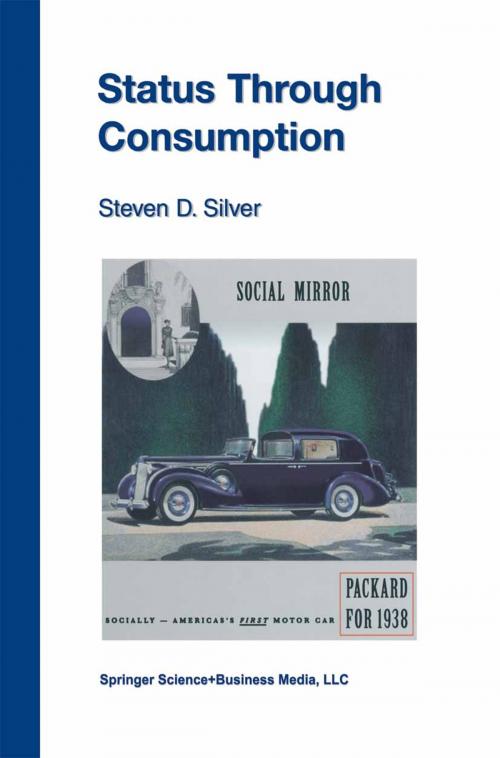Status Through Consumption
Dynamics of Consuming in Structured Environments
Business & Finance, Economics, Microeconomics, Public Finance| Author: | Steven D. Silver | ISBN: | 9781461509837 |
| Publisher: | Springer US | Publication: | December 6, 2012 |
| Imprint: | Springer | Language: | English |
| Author: | Steven D. Silver |
| ISBN: | 9781461509837 |
| Publisher: | Springer US |
| Publication: | December 6, 2012 |
| Imprint: | Springer |
| Language: | English |
Consumption takes place in settings or environments which have both direct and indirect effects on its dynamic path. Direct effects of environments on activities in consuming can occur through constraints that environments impose. Environment can also have indirect effects on consumption through enduring modification of internalized constructs which enter heuristics for decisions on activities. The importance of environments to consumption is increased by the definitional dependence of status on the judgements of others. This study examines microprocessing in consumer activities for status as it interacts with structure in the environments of these activities.
The importance of environments in status activities provides the basis for a seperate, but related inquiry into observed differences in the form they take across societies. Conjecture on the consequences of differences in the structure of environments for consumption that typify a society is studied in the narrative statements by members of comparison societies and in the content of print advertising in these societies. Evolutionary processes which could establish observed differences in structure across societies are also considered in both their systematic and random components. I review models of random drift and stochastic resonance as candidate forms for generating observed structure in environments. Directions for the subsequent study of status through consumption are discussed.P
- Introduction: Status Through Consumption;
- Knowledge Use in Nonwork Activities for Status;
- Interactions of Consumer Microprocessing and Structured Environments: Activity Feedback and the Stability of Structure;
- Awards and Honors Systems in Structured Environments: Cross Societal Comparisons of Narrative Statements on Consuming for Status;
- Comparative Analyses of Consumption Appeals in the Print Advertising of the USA and France, 1955-1991
- Random Process in the Generation of Structured Environments;
- Overview and directions for Study of Status Through Consumption.
Consumption takes place in settings or environments which have both direct and indirect effects on its dynamic path. Direct effects of environments on activities in consuming can occur through constraints that environments impose. Environment can also have indirect effects on consumption through enduring modification of internalized constructs which enter heuristics for decisions on activities. The importance of environments to consumption is increased by the definitional dependence of status on the judgements of others. This study examines microprocessing in consumer activities for status as it interacts with structure in the environments of these activities.
The importance of environments in status activities provides the basis for a seperate, but related inquiry into observed differences in the form they take across societies. Conjecture on the consequences of differences in the structure of environments for consumption that typify a society is studied in the narrative statements by members of comparison societies and in the content of print advertising in these societies. Evolutionary processes which could establish observed differences in structure across societies are also considered in both their systematic and random components. I review models of random drift and stochastic resonance as candidate forms for generating observed structure in environments. Directions for the subsequent study of status through consumption are discussed.P
- Introduction: Status Through Consumption;
- Knowledge Use in Nonwork Activities for Status;
- Interactions of Consumer Microprocessing and Structured Environments: Activity Feedback and the Stability of Structure;
- Awards and Honors Systems in Structured Environments: Cross Societal Comparisons of Narrative Statements on Consuming for Status;
- Comparative Analyses of Consumption Appeals in the Print Advertising of the USA and France, 1955-1991
- Random Process in the Generation of Structured Environments;
- Overview and directions for Study of Status Through Consumption.















